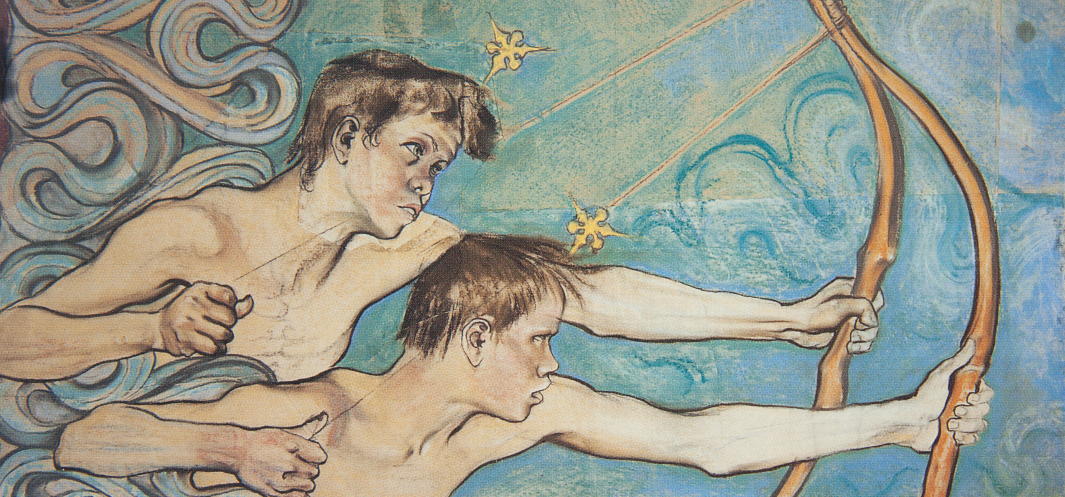On 11 December, the MNK Wyspiański Branch will be open to visitors until 12:00 p.m. We apologize for any inconvenience.
For conservation reasons, the museum is only open on Tuesdays, Fridays, Saturdays, and Sundays.
Tuesday is the free admission day for the permanent exhibitions at the National Museum in Krakow.
Opening hours for organized groups with prior reservation through the MNK Information and Reservation Centre:
Tuesday: 9:00 AM – 5:00 PM
Friday: 9:00 AM – 5:00 PM
For conservation reasons, the museum is only open on Tuesdays, Fridays, Saturdays, and Sundays.
Tuesday is the free admission day for the permanent exhibitions at the National Museum in Krakow.
Opening hours for organized groups with prior reservation through the MNK Information and Reservation Centre:
Tuesday: 9:00 AM – 5:00 PM
Friday: 9:00 AM – 5:00 PM
The Old Granary, a building erected in the 18th century outside the city walls, belonged to the Wielopolski family, then to the Jabłonowski family, and in 1905 it came under the city’s administration. It served various functions: as a granary, a carriage factory, a warehouse, a dairy, a shop, and during the Second Republic as the seat of the Association of Architects of the Republic. After 1945, it was taken over by the National Museum in Krakow and became a storehouse for works of art for many years. Between 2009 and 2013, the building underwent a major refurbishment to modernise and adapt the interiors for exhibitions of the 'Europeum' European Culture Centre
Since 2021, the Granary has housed the Stanisław Wyspiański Museum: an exhibition space and a place for research into the biography, works and artistic techniques of one of Poland's most outstanding and versatile artists – playwright, poet, painter, graphic artist, theatre reformer and interior designer.
The National Museum in Krakow holds the largest collection of Stanisław Wyspiański's works in Poland, comprising over 1,100 objects. The most important are portrait and landscape paintings, as well as a set of designs for decorating Krakow's churches and public buildings: the Franciscan Church, Wawel Cathedral and the Medical Association House. The collection also includes drawings, textiles, furniture, sculptures, engravings and art books. The outstanding and unique character of these collections is presented on the three floors of the Granary: the ground floor, first floor and basement.
By opening a separate department to present the works of Stanisław Wyspiański, the Museum is continuing its rich history of educational and exhibition activities to popularise his works, first undertaken shortly after the artist's death in 1907. They resulted in monographic exhibitions, e.g. in the Cloth Hall (1912, 1930) and in the Main Building (1957, 2000, 2007, 2017, 2019), as well as in biographical museums devoted to him: in Kanonicza Street (1983–2002) and in the Szołayski Tenement House in Szczepański Square (2004–2012).
In order to ensure the safety of the collections for a permanent exhibition, it was necessary to adapt the conditions to the most sensitive objects, and thus to select the right light intensity and exposure time for the reaction of the materials used by the artist. For these reasons, the exhibition will come in two versions, changing every year. Moreover, in comparison with other branches of the National Museum in Krakow, it will be open to visitors for a shorter time during the week.
Exhibition Curator Magdalena Laskowska
The National Museum in Krakow holds the largest collection of Stanisław Wyspiański's works in Poland, comprising over 1,100 objects. The most important are portrait and landscape paintings, as well as a set of designs for decorating Krakow's churches and public buildings: the Franciscan Church, Wawel Cathedral and the Medical Association House. The collection also includes drawings, textiles, furniture, sculptures, engravings and art books. The outstanding and unique character of these collections is presented on the three floors of the Granary: the ground floor, first floor and basement.
By opening a separate department to present the works of Stanisław Wyspiański, the Museum is continuing its rich history of educational and exhibition activities to popularise his works, first undertaken shortly after the artist's death in 1907. They resulted in monographic exhibitions, e.g. in the Cloth Hall (1912, 1930) and in the Main Building (1957, 2000, 2007, 2017, 2019), as well as in biographical museums devoted to him: in Kanonicza Street (1983–2002) and in the Szołayski Tenement House in Szczepański Square (2004–2012).
In order to ensure the safety of the collections for a permanent exhibition, it was necessary to adapt the conditions to the most sensitive objects, and thus to select the right light intensity and exposure time for the reaction of the materials used by the artist. For these reasons, the exhibition will come in two versions, changing every year. Moreover, in comparison with other branches of the National Museum in Krakow, it will be open to visitors for a shorter time during the week.
Exhibition Curator Magdalena Laskowska
